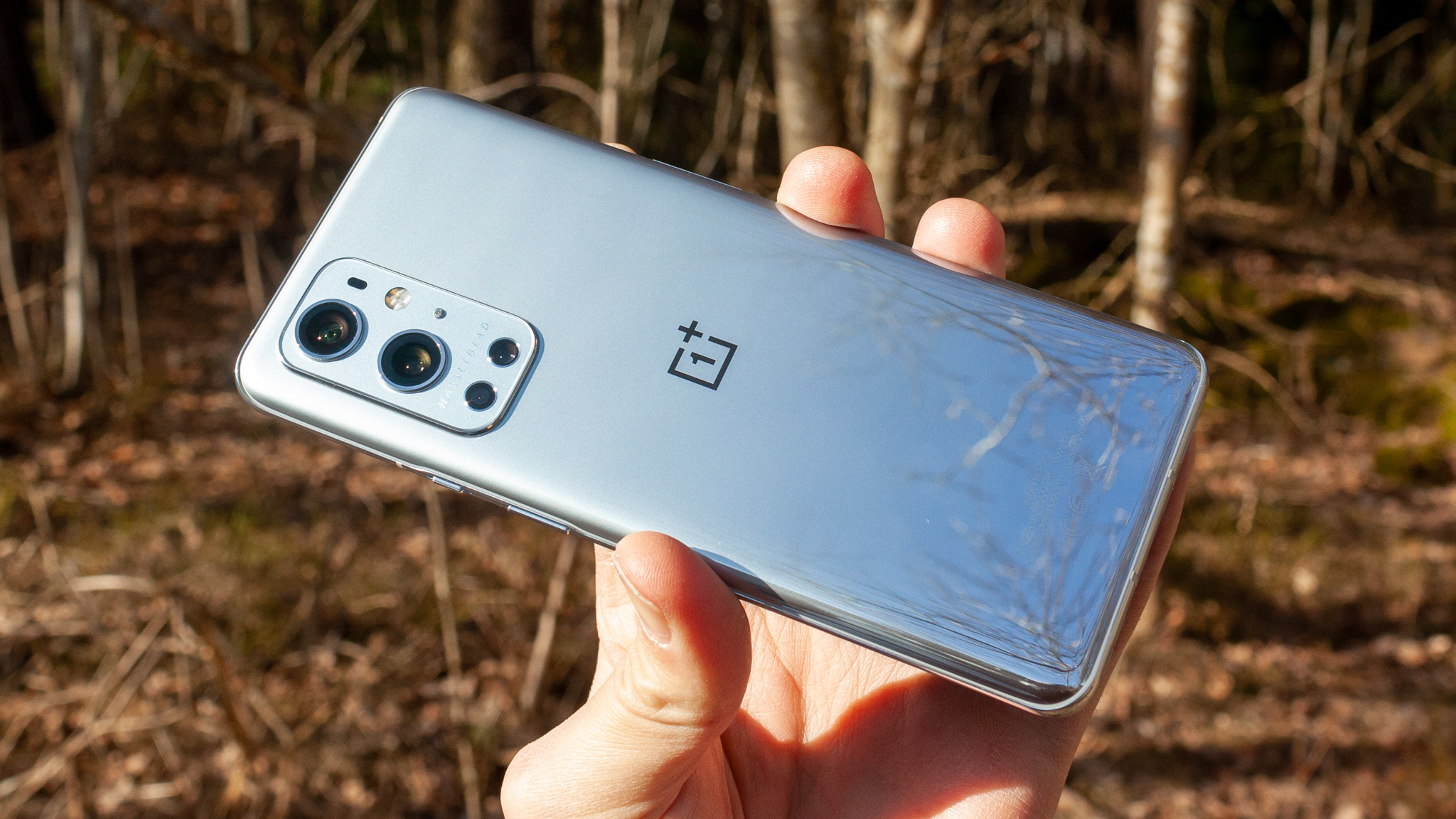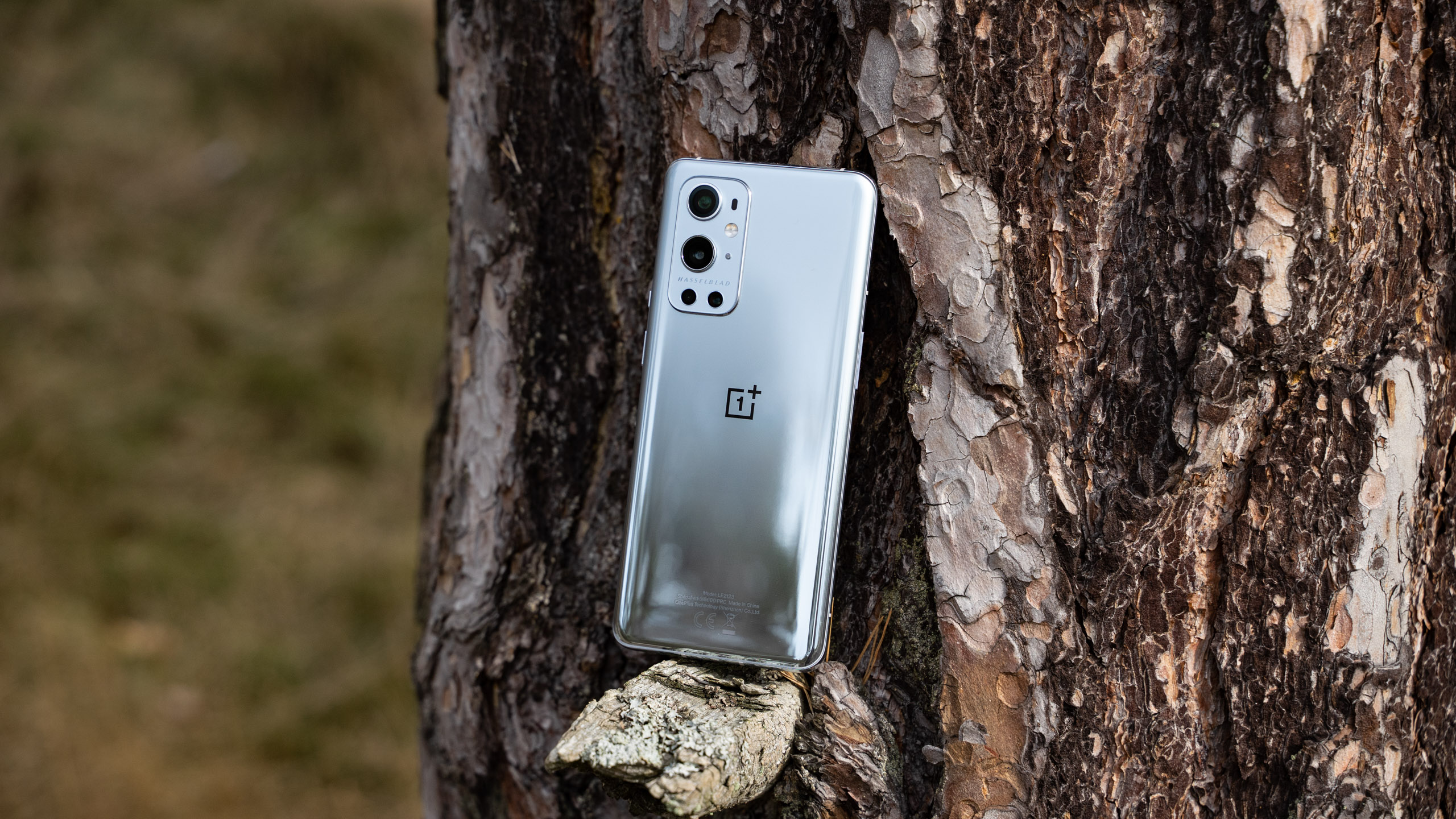
The OnePlus 9 Pro is precisely the kind of classy flagship phone that OnePlus itself once set out to undercut, and the Realme GT is precisely the kind of phone that OnePlus used to make.
So has OnePlus been beaten at what was, until fairly recently, its own game? Does the Realme GT make the OnePlus 9 Pro look helplessly decadent and irrelevant in these budget-stretching times?
For answers to these questions and many more, read on.
OnePlus 9 Pro vs Realme GT price and availability
There’s a huge discrepancy in the pricing of these two phones, though availability is a particular issue for one of them.
The OnePlus 9 Pro arrived on March 30, priced at $969 / £829 for 8GB of RAM and 128GB of storage. The higher 12GB/256GB model costs $1069 / £929.
The Realme GT was officially released in March 2021 at a price of €449, which works out to around $550 / £390 / AU$710. As this suggests, it’s not universally available.
While the Reamle GT is technically on sale in the UK, you’ll have to go through an import retailer to secure it. It isn’t set for release in the US or Australia either, though in the latter case, neither is the OnePlus 9 Pro.
Sign up for breaking news, reviews, opinion, top tech deals, and more.
Design
The OnePlus 9 Pro design has many qualities, but it’s not a particularly unique looking phones. It very much follows the template set forth by the OnePlus 8 and OnePlus 7 before it.
There’s a fairly premium-feeling curved glass display and a similarly curvy rear panel, but also a relatively dull camera module and a familiar aluminum frame. The Morning Mist finish we reviewed takes on the appearance of a fogged up mirror, but it fails to do much to give this design some spark.

One thing the Realme GT is most certainly not is drab or boring. Our test model lives up to its ‘Grand Tourer’ name with a yellow faux-leather rear, broken up by a black glass racing strip that trails down from the camera bump. It won’t be for everyone, and there’s a case to be made that it’s somewhat garish, but at least it stands out in a crowd.
Eye-catching colors aside, the Realme GT actually has a pretty regular design. It’s smaller than average, at 158.5 x 73.3 x 8.4mm. That certainly makes it more compact than the 163.2 x 73.6 x 8.7mm OnePlus 9 Pro, at any rate.
It’s also lighter at 186g versus the OnePlus 9 Pro’s 197g. For that you can at least partially blame the GT’s plastic frame, which is a decidedly less premium material than the OnePlus 9 Pro’s aluminum body.

OnePlus also wins back some credit with its IP68 certification level, which its more affordable rival lacks.
Points also go to the OnePlus 9 Pro for its physical alert slider, which is always a convenient control to have at your fingertips. Although, the Realme GT has its own point of interest in a 3.5mm headphone jack.
Both phones have stereo speakers, though the OnePlus 9 Pro’s sound better.
Display

OnePlus wins the display round quite handily, though the Realme GT’s screen is far from bad.
The OnePlus 9 Pro’s screen is a 6.7-inch 3216 x 1440 (aka QHD+) AMOLED that’s capable of outputting at a pixel-packed 525ppi. By comparison, the Realme GT goes with a more modest 6.43-inch Super AMOLED with a 1080 x 2400 resolution for 409ppi.
Both displays can run at 120Hz, so they’re both extremely fluid. Talking of which, both also pack an extremely rapid 360Hz touch sampling rate, which make them excellent picks for gamers.
We have to give OnePlus the clear nod here for its superior size and sharpness, as well as a higher peak brightness of 1300 nits (as opposed to the Realme GT’s 1000 nits).
Both phones utilize decent under display optical fingerprint sensors. We didn’t have any major issues with either.
Camera

This is the one round that the OnePlus 9 Pro takes by a mile. Its quad-camera system might not be the very best on the market, but it’s at least in the conversation as a genuine flagship performer, whereas its rival isn’t anywhere to be seen.
The OnePlus 9 Pro’s main 48MP sensor is a custom 1/1.43-inch Sony IMX789 that packs in 12-bit RAW output and Digital Overlap HDR (DOL-HDR) technology, the latter working to reduce HDR ghosting.
Possibly even more impressive in the grand scheme of things is the OnePlus 9 Pro’s 50MP ultra-wide camera. It’s based off an unusually strong Sony IMX766 image sensor, and it also packs a freeform lens that greatly reduces visual distortions.
You also get an 8MP 3.3x telephoto camera and a largely pointless 2MP monochrome sensor. But it’s those two main ones that really give the OnePlus 9 Pro its elite status.
That and the benefits of having Hasselblad tune your color science. Shots taken with the OnePlus 9 Pro really pop without looking fake or gaudy like some of its rivals.
The Realme GT really can’t compete with this. But again, it’s a good deal cheaper, so you wouldn’t expect it to.
What you do get is a creditable triple-camera system led by a 1/1.73" 64MP wide sensor. Photos taken with this look good, without ever approaching ‘great’ status. They’re bright and crisp, but show signs of over-sharpening and over-exposure, and it occasionally struggles to focus on close-up subjects.
The ultra-wide camera is a much more modest 8MP affair, though to Realme’s credit there’s a lot less distortion than we often get with phones at this price. There’s no telephoto provision whatsoever.
Another notable omission from the Realme is OIS, which hampers its ability in low light.
The Realme GT has its own superfluous sensor in the shape of a 2MP macro. Suffice to say, it’s pretty pointless.
The OnePlus 9 Pro beats the Realme GT on the video front too, being capable of shooting 8K video at 30fps and 4K video at 120fps. The Realme can only hit 4K at 60fps.
Specs and performance

One area in which both phones excel is performance. That’s thanks to the fact that both run on Qualcomm’s Snapdragon 888 with either 8 or 12GB of RAM.
Both phones will blast through high-end games with ease, and there’s nary a stutter from more mundane tasks. Geekbench 5 multi-core scores of 3508 for the Realme GT and 3600 for the OnePlus 9 Pro confirm that, to all intents and purposes, it’s a tie on the power front.
This performance is all the more impressive in the Realme GT given its much lower price. But the fact remains that there’s no clear winner when it comes to raw performance.
We can’t separate them on the storage front either, with both phones coming in 128GB and 256GB iterations. Neither has room for microSD card expansion.
It’s left to the software provisions to sort this particular category out. And on that front, the OnePlus squeaks home a win.
Oxygen OS is one of the most appealing Android skins on the market, thanks to its inherent smoothness and tasteful, friction-free custom UI. It helps that there’s a blissful lack of bloatware to contend with too.
Conversely, the Realme GT layers Realme UI 2.0 over the same Android 11 OS. This is very similar to Oppo’s ColorOS, which is what future OnePlus phones will take as their basis. Realme and OnePlus are owned by the same parent company.
But don’t let that common link fool you - while it’s packed full of handy personalizations, Realme UI 2.0 is well behind OxygenOS right now. It’s just not as slick or stylish, and there’s stacks more bloatware (albeit region-specific), including Realme apps such as Phone Manager, Realme Link, and a theme store, and third-party apps like Booking.com, Agoda and LinkedIn.
Battery
Both of these phones pack in a 4500mAh battery, which results in decent if not spectacular stamina.
Unsurprisingly, both phones will tend to last through a full day of moderate usage, but you wouldn’t want to push them any further. If we were to give the nod to a winner, then the OnePlus 9 Pro generally had a little more left at the end of a heavy day, but there really isn’t a lot in it.
Both phones give you a generous 65W wired charger in the box. This equates to a full charge from empty in around half an hour, which is a major plus point.
Neither Sony nor Samsung get anywhere near that level of charging power with their £1,200 flagship phones, so to see it here in the £400–500 Realme GT is particularly gratifying.
However, the OnePlus goes one strep further with 50W wireless charging support. The Realme GT doesn’t have any wireless charging facility at all, which is a shame.
Takeaway


It’s quite amusing to see the Realme GT occupying the position that the original OnePlus One did back in 2014 - especially within the context of this comparison.
Like the OnePlus One, the Realme GT gives you flagship performance, a stand-out design, and a very competitive display for a price that’s much lower than established range-toppers. Only the camera system and the lack of wireless charging really tips you off that it’s a mid-ranger at heart.
The OnePlus 9 Pro, by comparison, is the quintessential flagship phone - classy, possessing a top-notch display, largely spec-complete, and equipped with a stand-out camera.
Make no mistake, the OnePlus 9 Pro is the better phone, particularly when it comes to taking pictures. But if the thought of paying £800–900 makes you feel queasy, then the Realme GT is an excellent upper-mid-range upstart.
- Check out all the best Samsung phones

Jon is a freelance journalist who has been covering tech since the dawn of the smartphone era. Besides TechRadar, his words and pictures have appeared in The Telegraph, ShortList, Tech Advisor, Trusted Reviews, Expert Reviews, and more. He largely covers consumer technology, with a particular focus on smartphones and tablets. However, he's also been known to dabble in the worlds of entertainment and video games.
